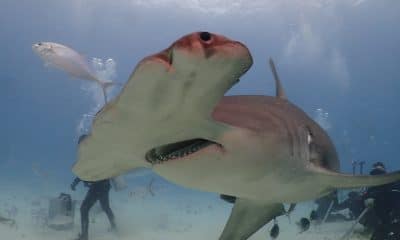News
Two wrecks spanning almost 300 years of history granted protection
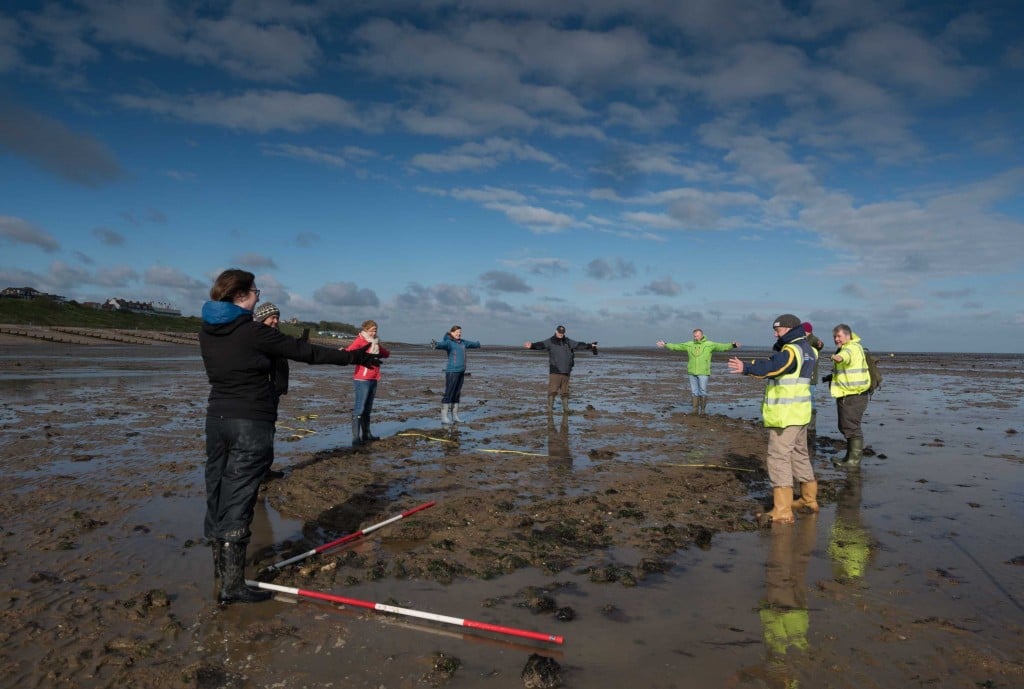
The mystery wreck of two possible late 17th or early 18th century merchant ships containing 15 cast iron English cannons off Chesil Beach in Dorset and a First World War mine-laying U-boat off Whitby in North Yorkshire have been granted protection by the Department for Digital, Culture, Media and Sport on the advice of Historic England.
The rare cannon-site wreck lies in two parts off Chesil Beach in Dorset and was discovered in 2010 by divers involved in the Weymouth-based Shipwreck Project, which promotes wreck research. There is an inshore site which lies just off the beach which comprises eight cast iron cannons identified as English 24-32 pounders cast between 1650 and 1725. The offshore site lies 220m south of these cannons and consists of seven cast iron English cannons, one of which is probably a six pounder, cast in the second half of the 17th century. The guns are not firmly dated because their features are heavily obscured by build-up of sediment.
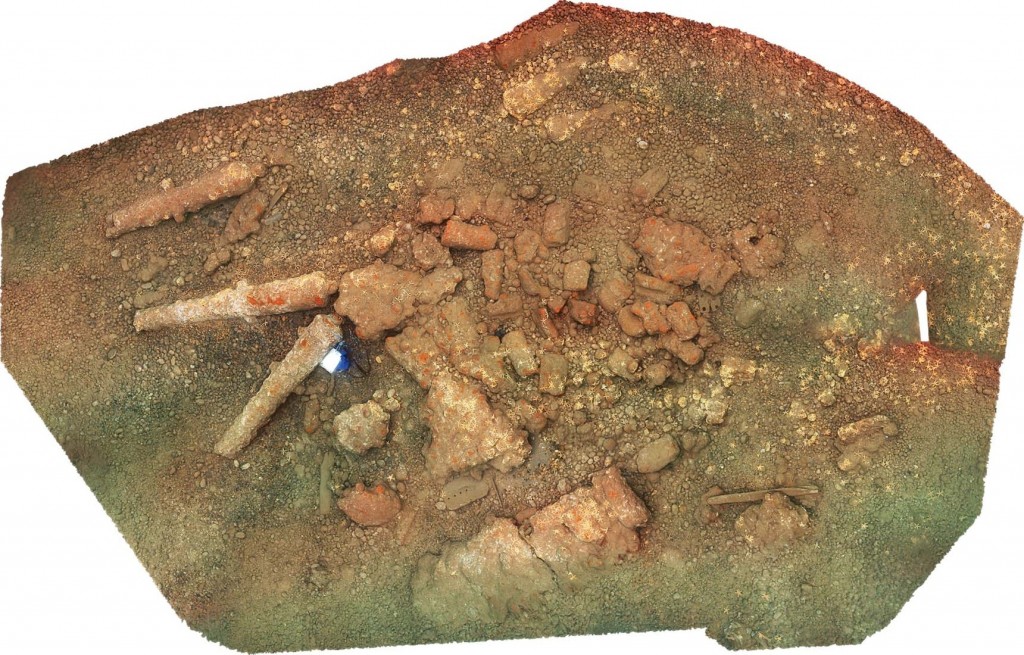
A photo mosaic showing the inshore Chesil Beach cannon site with its eight cast iron cannons. (c) Historic England
The inshore site appears to be the wreck of a merchant ship and the fact that the guns are of different lengths suggests that they were cargo. The offshore site is believed to be the wreck of a wooden sailing ship but because the cannons are different to those found inshore, this suggests the sites could represent two separate wrecks. It is possible that the Chesil Beach cannon sites could be the Dutch West Indiaman ‘De Hoop’ which stranded at Chesil Cove in 1749 and British cargo vessel ‘Squirrel’ which stranded on Chesil Beach in 1750.
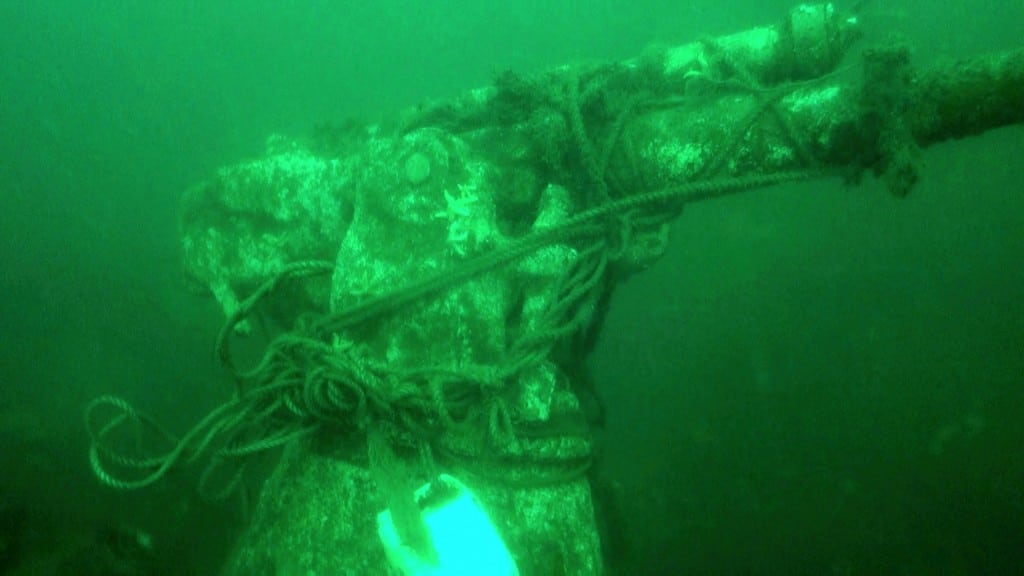
88mm deck gun from the First World War German UC-70 minelaying submarine. (c) Historic England
The First World War U-boat that has been granted protection is a German Imperial Navy UC-70 mine-laying submarine which was commissioned in 1916. The submarine conducted 10 patrols and sank 40 ships during the war before being bombed on 28 August 1918 with the loss of all its crew. The UC-70 is representative of the Type UC II class of submarines; the most successful submarine design in history. The submarine was discovered as part of Historic England’s recent work to research and survey First World War submarine losses within UK territorial waters around England.
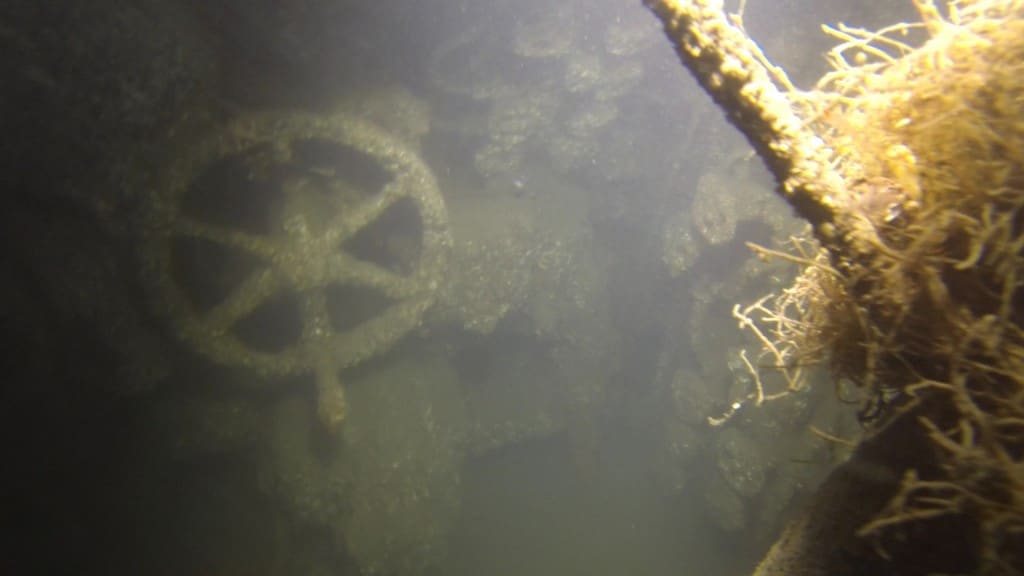
UC-70 First World War minelaying submarine control room. (c) Historic England
John Glen, Minister for Arts, Heritage and Tourism, said: “It’s important that we protect these two sites that are part of our country’s seafaring and naval history. The shipwreck off Chesil Beach is a rare discovery and by protecting it we can encourage further study of the site. The listing of the U-boat wreck off Whitby is also particularly poignant, as we continue to mark the centenary of the First World War and remember the sacrifices of those who fought 100 years ago.”
Duncan Wilson, Chief Executive of Historic England, said: “These wrecks are separated by 280 miles and almost 300 years but they both comprise important elements of our maritime heritage. The importance of the UC-70 lies in its historical interest and the vulnerability of its component parts as well as its sensitivity as a war grave. The Chesil Beach wreck site is also important but for different reasons – it’s rare to discover wooden ships of this age surviving on the seabed with so many cannons.”
Historic England is also investigating the new discovery of a shipwreck at Tankerton, near Whitstable in North Kent, which comprises the bottom timbers of an oak-built boat. The wreck was discovered by a group of local volunteers. Tree-ring dating is being undertaken to determine the age of the ship which is estimated to be between 1200AD -1800AD.
For more information, please visit www.HistoricEngland.org.uk.
Gear News
Scubapro Free Octopus Promotion 2024

Free Octopus with every purchase of a SCUBAPRO regulator system
Just in time for the spring season, divers can save money with the FREE OCTOPUS SPRING PROMOTION! Until July 31st SCUBAPRO offers an Octopus for free
with every purchase of a regulator system!
Get a free S270 OCTOPUS with purchase of these combinations:
MK25 EVO or MK19 EVO with A700
MK25 EVO or MK19 EVO with S620Ti
MK25 EVO or MK19 EVO with D420
MK25 EVO Din mit S620Ti-X
Get a free R105 OCTOPUS with purchase of the following combinations:
MK25 EVO or MK19 EVO with G260
MK25 EVO or MK17 EVO with S600
SCUBAPRO offers a 30-year first owner warranty on all regulators, with a revision period of two years or 100 dives. All SCUBAPRO regulators are of course certified according to the new European test standard EN250-2014.
Available at participating SCUBAPRO dealers. Promotion may not be available in all regions. Find an authorized SCUBAPRO Dealer at scubapro.com.
More information available on www.scubapro.com.
Blogs
Northern Red Sea Reefs and Wrecks Trip Report, Part 3: The Mighty Thistlegorm

Jake Davies boards Ghazala Explorer for an unforgettable Red Sea diving experience…
Overnight, the wind picked up, making the planned morning dive a bit bumpy on the Zodiacs to the drop point on Thomas Reef. There, we would dive along the reef before descending through the canyon and then passing under the arch before ascending the wall with a gentle drift. The site provided great encounters with more pelagic species, including shoals of large barracuda, tuna, and bigeye trevally.
Once back on the boat, it was time to get everything tied down again as we would head back south. This time, with the wind behind us, heading to Ras Mohammed to dive Jackfish Alley for another great gentle drift wall dive before then heading up the coast towards the Gulf of Suez to moor up at the wreck of the Thistlegorm. This being the highlight wreck dive of the trip and for many onboard, including myself, it was the first time diving this iconic wreck. I had heard so much about the wreck from friends, and globally, this is a must on any diver’s list. Fortunately for us, there was only one other boat at the site, which was a rarity. A great briefing was delivered by Ahmed, who provided a detailed background about the wreck’s history along with all the required safety information as the currents and visibility at the site can be variable.

Kitting up, there was a lot of excitement on deck before entering the water and heading down the shoreline. Descending to the wreck, there was a light northerly current which reduced the visibility, making it feel more like the conditions that can be found off the Welsh coast. At 10m from the bottom, the outline of the wreck appeared as we reached the area of the wreck which had been bombed, as our mooring line was attached to part of the propeller shaft. Arriving on deck, instantly everywhere you looked there were many of the supplies which the ship was carrying, including Bren Carrier tanks and projectiles that instantly stood out.

We headed around the exterior, taking a look at the large propeller and guns mounted on deck before entering the wreck on the port side to take a look in the holds. It was incredible to see all the trucks, Norton 16H, and BSA motorcycles still perfectly stacked within, providing a real snapshot in time.

Overall, we had four dives on the Thistlegorm, where for all of the dives we were the only group in the water, and at times, there were just three of us on the whole wreck, which made it even more special, especially knowing that most days the wreck has hundreds of divers. Along with the history of the wreck, there was plenty of marine life on the wreck and around, from big green turtles to batfish, along with shoals of mackerel being hunted by trevally. Some unforgettable dives.

The final leg of the trip saw us cross back over the Suez Canal to the Gobal Islands where we planned to stay the night and do three dives at the Dolphin House for the potential of sharing the dive with dolphins. The site, which included a channel that was teeming with reef fish, especially large numbers of goatfish that swam in large shoals along the edge of the reef. These were nice relaxing dives to end the week. Unfortunately, the dolphins didn’t show up, which was okay as like all marine life they are difficult to predict and you can’t guarantee what’s going to be seen. With the last dive complete, we headed back to port for the final night where it was time to clean all the kit and pack before the departure flight the next day.

The whole week from start to finish on Ghazala Explorer was amazing; the boat had all the facilities you need for a comfortable week aboard. The crew were always there to help throughout the day and the chefs providing top quality food which was required after every dive. The itinerary providing some of the best diving with a nice mixture of wreck and reef dives. I would recommend the trip to anyone, whether it’s your first Red Sea liveaboard in the Red Sea or you’re revisiting. Hopefully, it’s not too long before I head back to explore more of the Red Sea onboard Ghazala Explorer.

To find out more about the Northern Red Sea reef and wrecks itineraries aboard Ghazala Explorer, or to book, contact Scuba Travel now:
Email: dive@scubatravel.com
Tel: +44 (0)1483 411590
Photos: Jake Davies / Avalon.Red
-

 News3 months ago
News3 months agoHone your underwater photography skills with Alphamarine Photography at Red Sea Diving Safari in March
-

 News3 months ago
News3 months agoCapturing Critters in Lembeh Underwater Photography Workshop 2024: Event Roundup
-

 Marine Life & Conservation Blogs2 months ago
Marine Life & Conservation Blogs2 months agoCreature Feature: Swell Sharks
-

 Blogs2 months ago
Blogs2 months agoMurex Resorts: Passport to Paradise!
-

 Blogs2 months ago
Blogs2 months agoDiver Discovering Whale Skeletons Beneath Ice Judged World’s Best Underwater Photograph
-

 Gear Reviews3 months ago
Gear Reviews3 months agoGear Review: Oceanic+ Dive Housing for iPhone
-

 Marine Life & Conservation2 months ago
Marine Life & Conservation2 months agoSave the Manatee Club launches brand new webcams at Silver Springs State Park, Florida
-

 News3 months ago
News3 months agoWorld’s Best Underwater Photographers Unveil Breathtaking Images at World Shootout 2023











